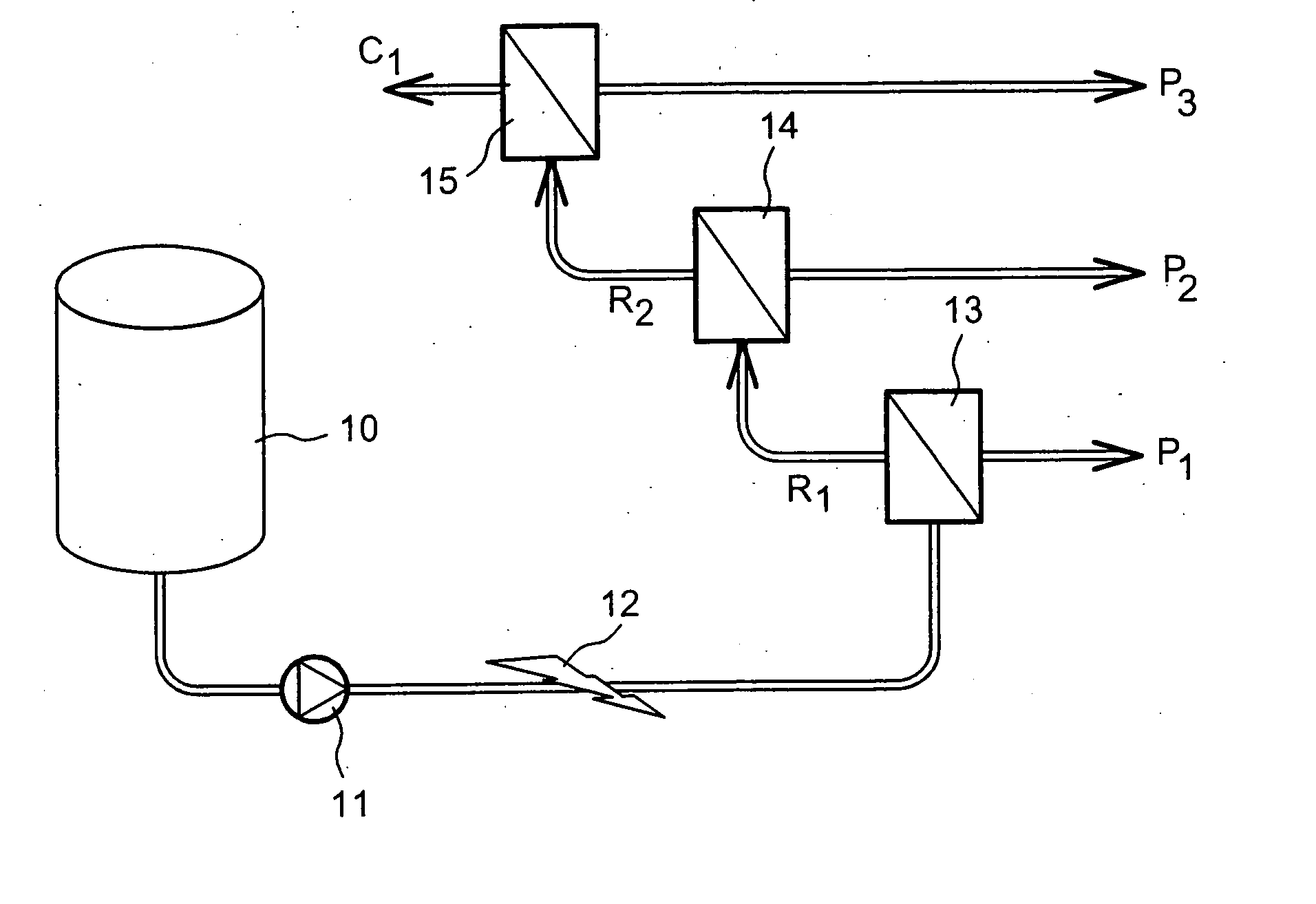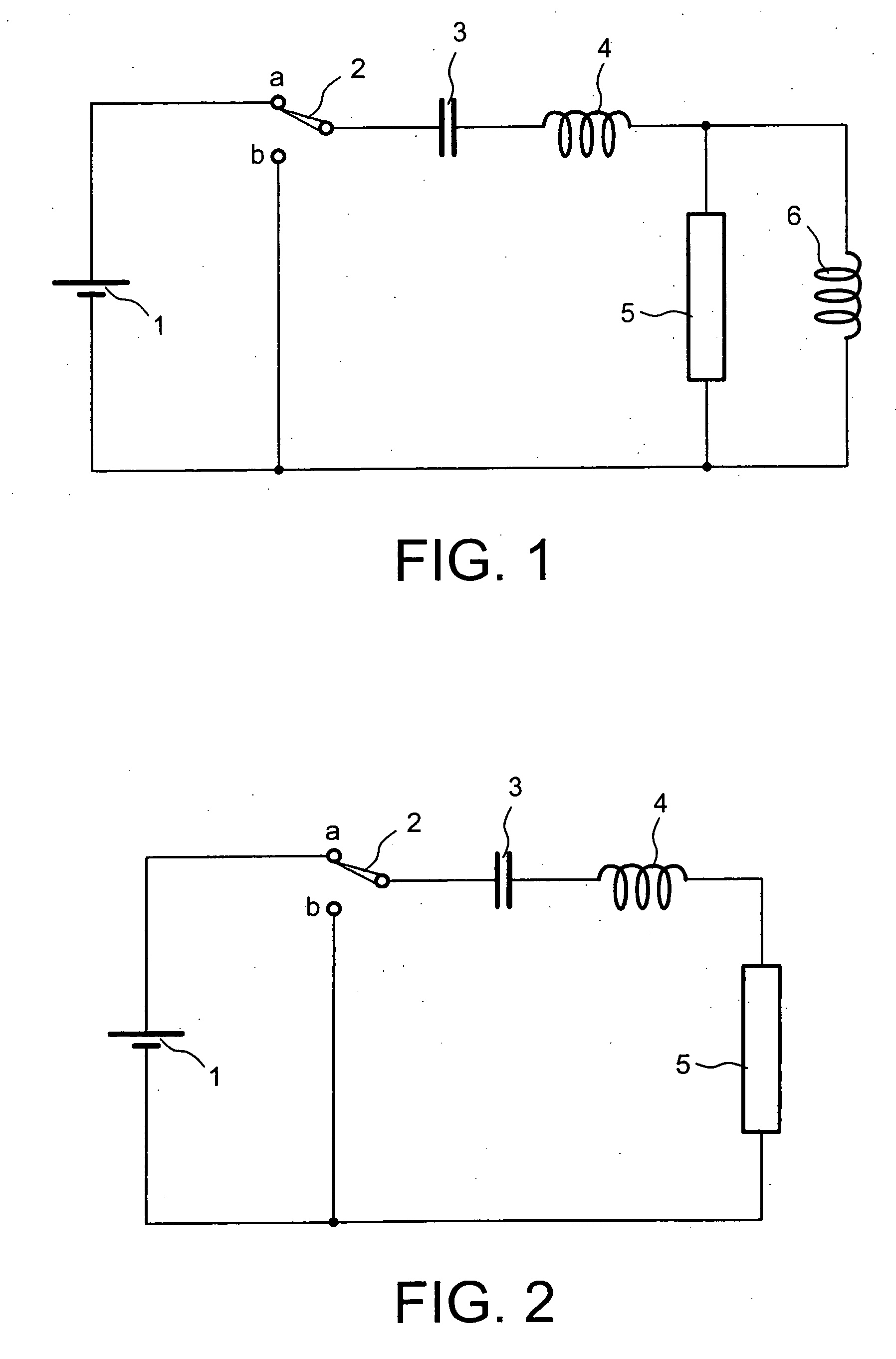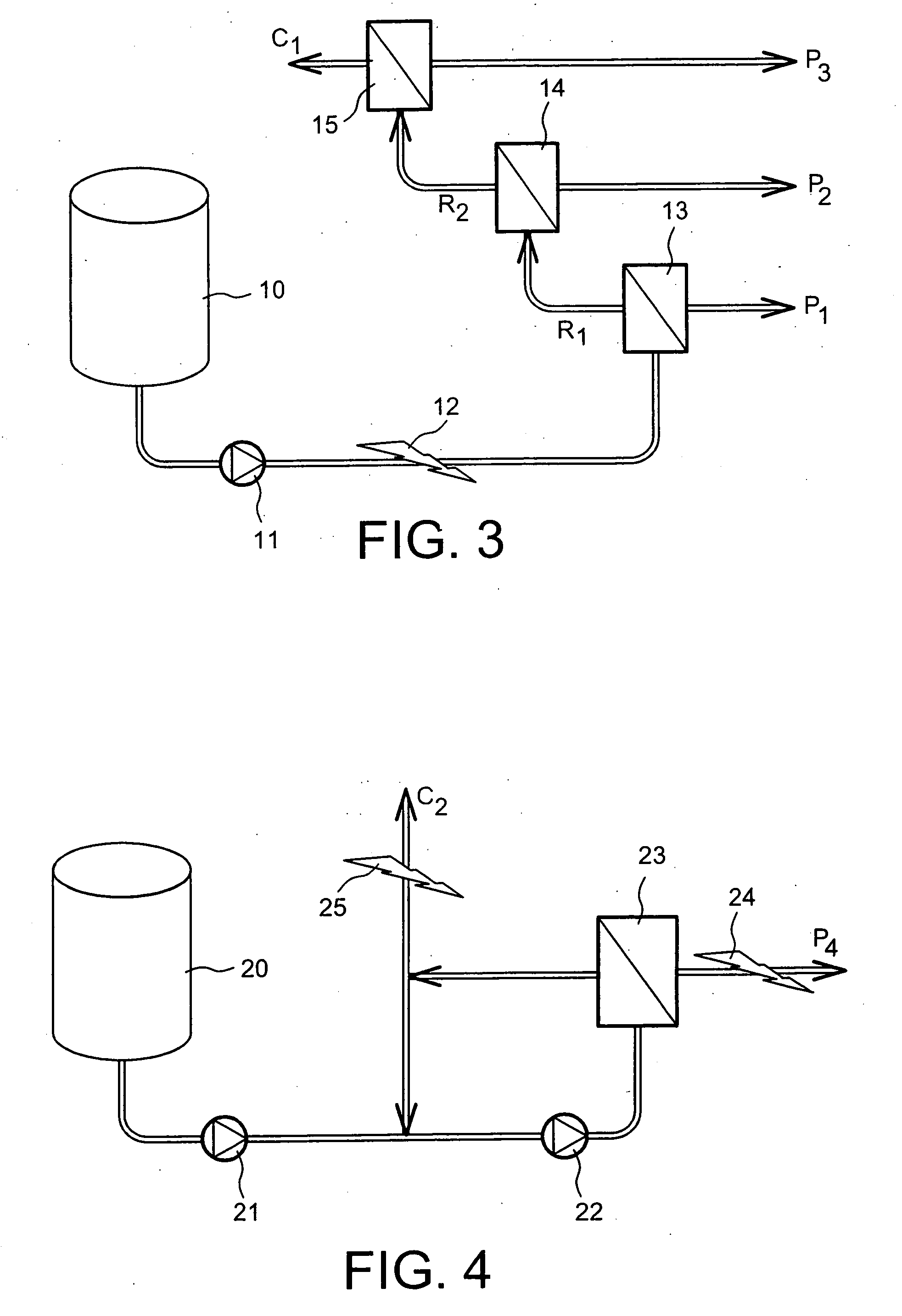Effluent treatment combining solid/liquid separation and pulsed electric fields
a technology of pulsed electric fields and effluent treatment, which is applied in the direction of biological water/sewage treatment, solid separation, filtration separation, etc., can solve the problems of residual elimination of oxidant, difficult to produce stabilised sludge, and reduced concentration of pathogenic organisms
- Summary
- Abstract
- Description
- Claims
- Application Information
AI Technical Summary
Problems solved by technology
Method used
Image
Examples
Embodiment Construction
[0071] For example, the embodiments described below are applicable to a solid / liquid separation obtained by membrane.
[0072] Unlike the different electrofiltration (or electro-membrane) methods according to prior art, the “high potential” electrode used in this invention is not inside the filter membrane or is not composed of the separating membrane itself. This aspect simplifies application of the method. Standard commercially available membranes may be installed in a module without adding a conducting sheet facing them (plane or spiral membrane) and without an internal conducting nucleus (cylindrical membrane).
[0073] This is due to the fact that within the range in which they are used, the electric fields produce physicochemical and biological effects that have a sufficiently long duration to be beneficial for a few seconds or few minutes.
[0074] The amplitudes of the electric field are also much higher. In practice, the effects described in old electrofiltration methods are fair...
PUM
| Property | Measurement | Unit |
|---|---|---|
| pressure | aaaaa | aaaaa |
| electric field | aaaaa | aaaaa |
| electric field | aaaaa | aaaaa |
Abstract
Description
Claims
Application Information
 Login to View More
Login to View More - R&D
- Intellectual Property
- Life Sciences
- Materials
- Tech Scout
- Unparalleled Data Quality
- Higher Quality Content
- 60% Fewer Hallucinations
Browse by: Latest US Patents, China's latest patents, Technical Efficacy Thesaurus, Application Domain, Technology Topic, Popular Technical Reports.
© 2025 PatSnap. All rights reserved.Legal|Privacy policy|Modern Slavery Act Transparency Statement|Sitemap|About US| Contact US: help@patsnap.com



